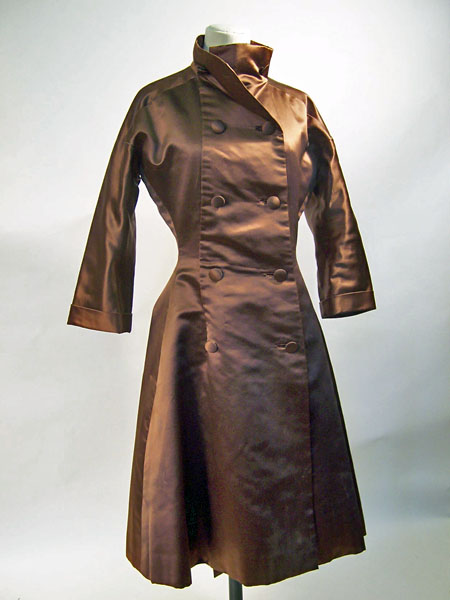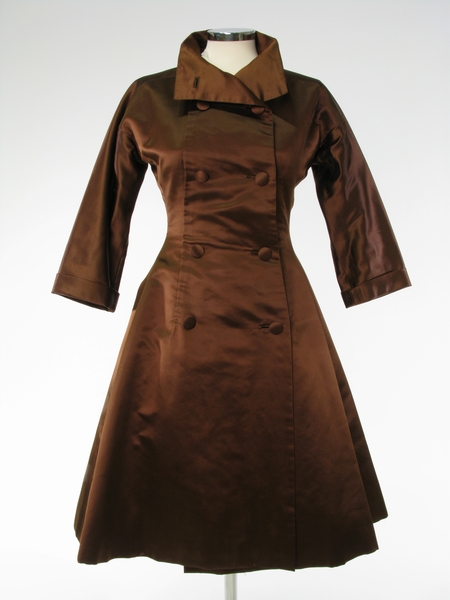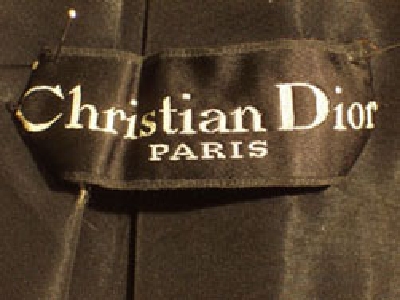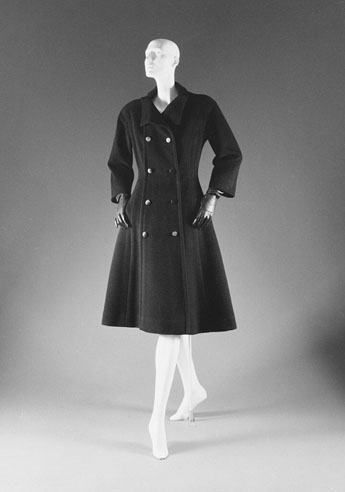dress
Christian Dior, Paris 1947 - 1957
Summary
Chestnut brown silk satin coat-dress (redingote in the French) cut in the DB 'H-line' (princess line, without waist seam). Three quarter length sleeves ending in turn-up cuffs. Very wide revers. Double breasted with 5 pairs of self fabric covered buttons (two pairs concealed by the turn-down revers). Lined in black with stiffened interlining in skirt to create full shape. Labelled 'Christian Dior, Paris' Belonged to Faith Eaton, the Queen's doll restorer who lived in Little Venice. The suggestion has been made that this outfit was too grand and expensive for her, so was a perquisite from Princess Margaret, a devotee of Dior. The Costume Institute at the Metropolitan Museum of Art in New York has a similar coat-dress dated a/w 1955 (C.1.67.2.8). Balenciaga made a very similar DB satin redingote, advertised in L'Art et la Mode Sept 1955 p.101 (AW collections).
Display Label
A short, boxy jacket and three-quarter length sleeves lend an almost doll-like quality to this white suit by Yves St Laurent at Dior in 1960, and casts a retrospective eye towards Chanel's celebrated boucle suits. Dior's famous New Look, characterised by narrow waistlines and wide skirts had a long reign in the world of haute couture, and the Gallery recently acquired a coat dress in chestnut silk satin by Dior in about 1955. This dress belonged to Faith Eaton, the Queen's doll restorer who lived in Little Venice, and the suggestion has been made that this outfit was far to grand for her, so was a perquisite from the Queen or Princess Margaret in the late 1950s. Another black cocktail dress of the same date was bought from Christian Dior, London around 1956, followed by a dress dated 1960, when slimmer and shorter styles were popular, and daywear was increasingly required to look neat, chic and simple. The next three images show the Duchess of Windsor's Dior outfit of about 1950 which she commissioned to have interchangeable wide and narrow skirt, exemplifying the 'New Look'. Then there are two seminal collection outfits from the Zigzag line (1948) and the Tulip line (1953). The last image, a printed silk cocktail dress, is from 1956. Dior's died suddenly in 1957 leaving behind a fashion house at the peak of success. House of Dior has maintained its position in the forefront of couture, employing its iconic logo to good effect in peripheral accessories and products as varied as perfume, luggage and handbags. A series of high-profile head designers working under the Dior label, starting with Yves St Laurent, and including such figures as Marc Bohan and John Galliano, have added glamour, humour and panache to the respectability of a long-established company, and ensured its continuing success.
Object Name
dress
Creators Name
Date Created
1955
Dimensions
L: 104cm
waist: 71cm
accession number
2006.47
Collection Group
Place of creation
Paris
Medium
Legal
© Manchester Art Gallery




